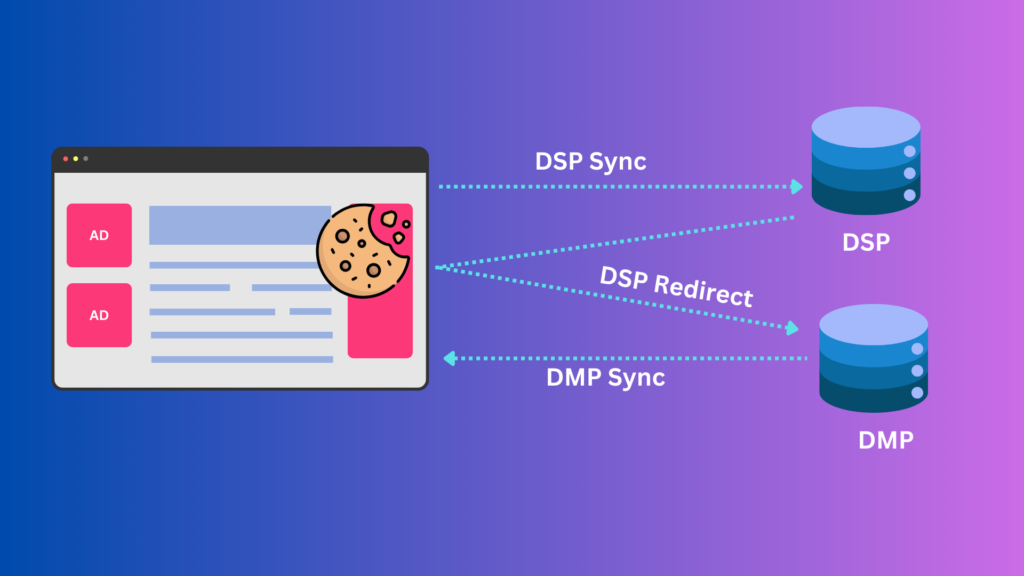What are cookies?
Cookies are small piece of code that collects information about online users while browsing a website.
What is cookie syncing?
Cookie syncing is a technique used in digital advertising and data tracking to align and share information between different ad networks, data management platforms (DMPs), and other third-party services. Essentially, it’s a process that helps various entities involved in online advertising to coordinate and match up their cookies, which are small pieces of data stored on a user’s device to track their behavior and preferences.

Phases of cookie syncing
Initial Tracking:
When a user visits a website, cookies are set by various parties, such as the website itself, ad networks, or analytics providers. Each of these parties may use their own cookies to track user activity and gather data.
Syncing:
Cookie syncing involves exchanging or matching these cookies between different parties. For instance, if an ad network wants to target a user with specific ads, it needs to know what other networks or platforms have data on that user. By syncing cookies, the ad network can identify and match the user’s unique identifier across different platforms.
Data Sharing:
Once the cookies are synced, each party has a consistent view of the user’s behavior and preferences, allowing for more accurate ad targeting, frequency capping, and measurement of ad effectiveness.
Privacy Considerations:
With growing concerns around privacy and data protection, cookie syncing practices are increasingly scrutinized. Regulations like GDPR and CCPA impose restrictions on how data can be shared and require transparency and user consent.
Simplified overview of how it works:
1. When a user visits a website for the first time, the user’s browser sends an ad request to a DSP, which creates a user ID and stores it in a third-party cookie.
2. A DSP then redirects the ad request to the data management platform (DMP) on the pixel URL. The DMP writes its own cookie or reads it if it already exists, and saves the DSP’s user ID in the match table alongside its own user ID. Then, it stores the information about its own ID and the DSP’s ID in a cookie-matching table.
3. The DMP also passes back its user ID in the URL parameter. The DSP then reads its own cookie and stores the DMP user ID along with its own user ID in the match table.
The cookie-matching table for both the DSP and DMP would look like this:
| User ID | DSP ID | DMP ID |
| 123456 | fgk5yvhk9hkl | mju2fdi349hsx |
| 435680 | bhb5yb7gv79 | jv467bhbgn98r |
In such a way, both platforms have each other’s IDs for the same user and the process is similar for almost the entire adtech ecosystem. It’s important to note here that this ID-creation process happens for almost every ad, and the cookie-syncing process occurs across many different advertising technology platforms.
Conclusion
Overall, cookie syncing helps advertisers and data handlers work together more effectively to deliver targeted ads and improve their campaigns, but it also raises important privacy issues that need to be managed carefully.